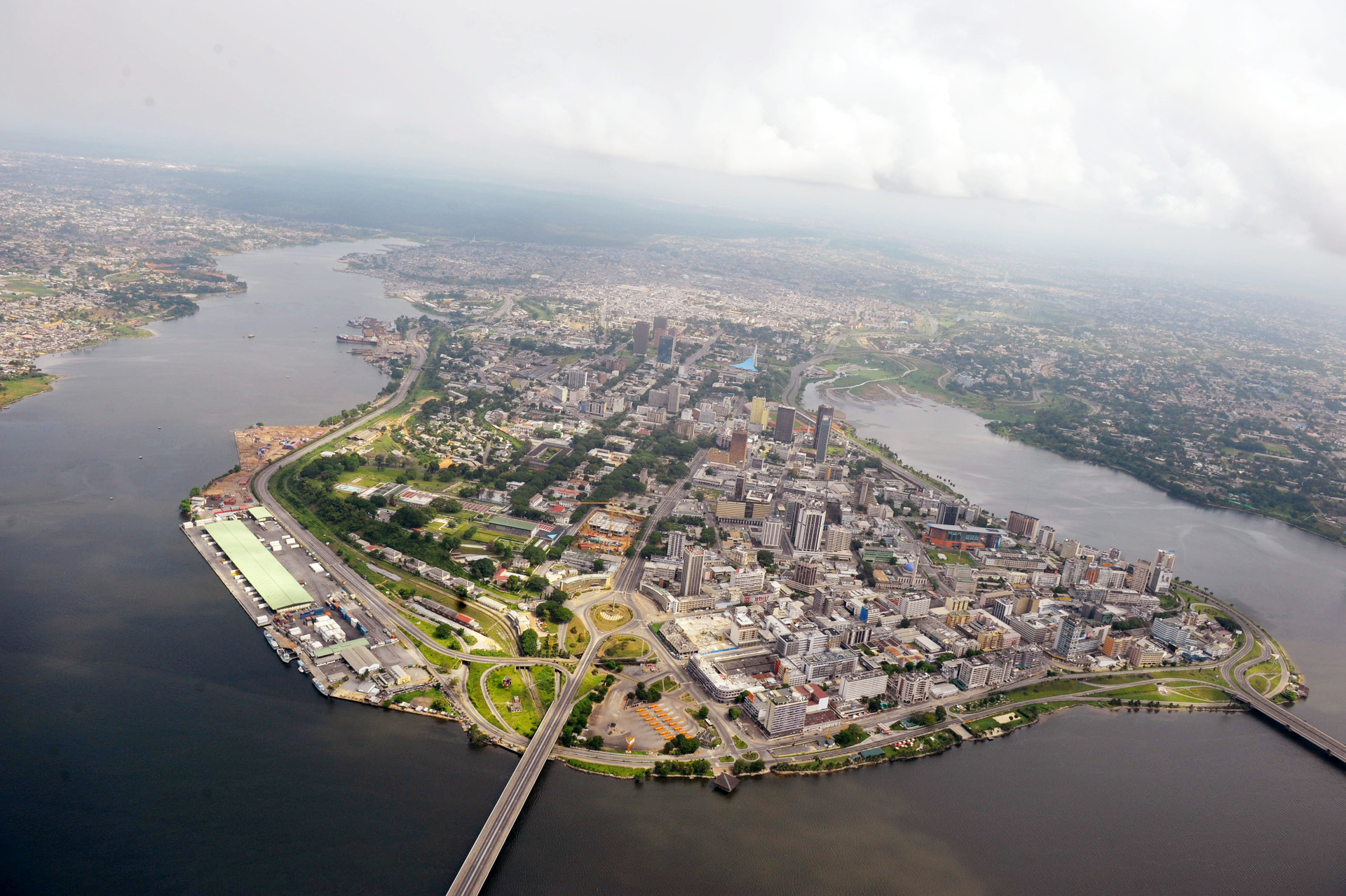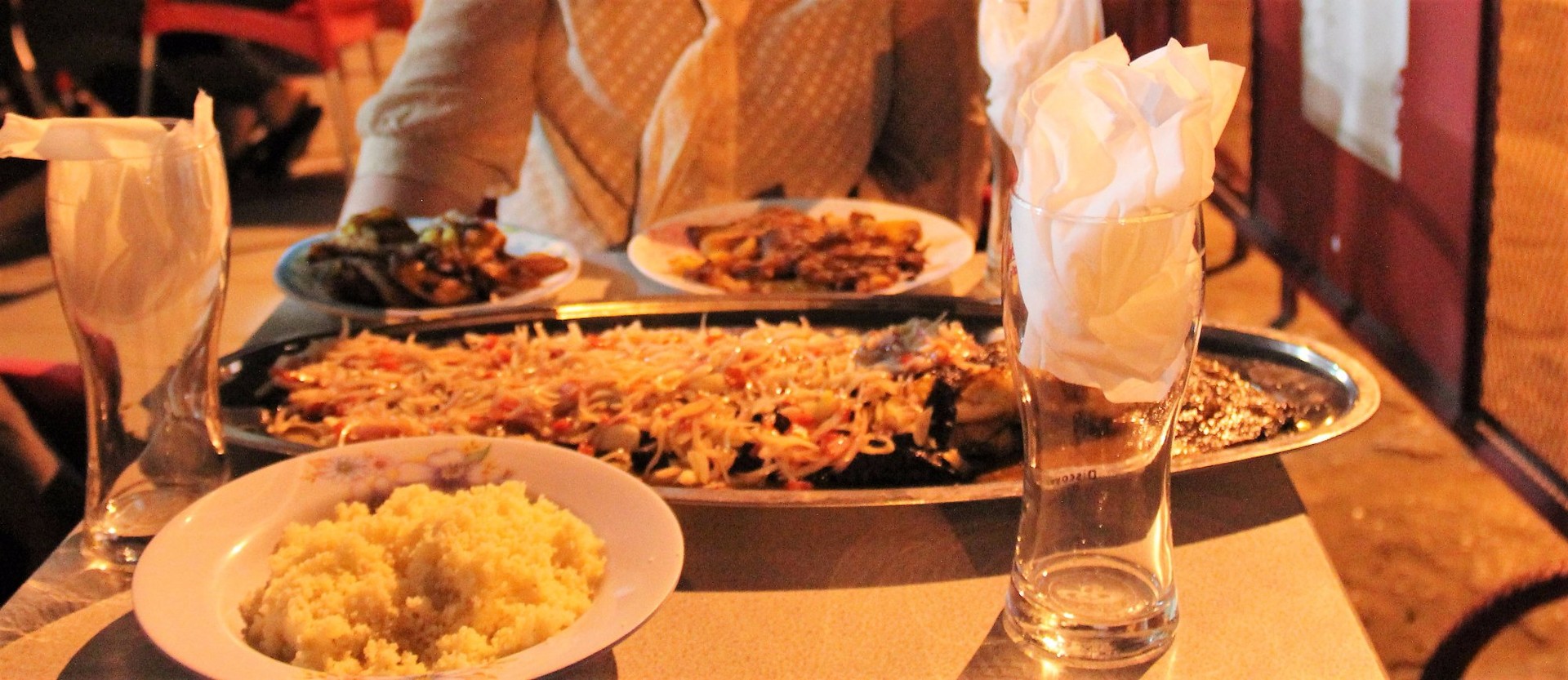Experience in Abidjan, Côte d'Ivoire by KOUASSI DIDIER STEPHANE
How did you feel about living in Abidjan? Do you recommend it? How is the city?
Ten communes make up the city of Abidjan: Le Plateau, Abobo, Adjame, Attékoubé, Cocody, Koumassi, Marcory, Port-Bouet, Treichville, Yopougon.
The city of Abidjan is very hectic.
Plateau
Nicknamed by some as the "Manhattan of the Tropics", Le Plateau with its many buildings overlooks the Ebrié Lagoon. Since the creation of the railway quarter, to accommodate the terminus of the Abidjan-Niger railway line, the Plateau has not ceased to develop to become the administrative, commercial and financial center of Côte d'Ivoire.
Abobo
The municipality of Abobo has long played the role of refuge for migrants with little financial means. Originally, this district was one of the first train stations; It developed spontaneously around the station.
Adjamé
Adjame is the oldest Abidjan strain. While the colonists settled in the Plateau, the first migrants, who had come to work on the site of the railway, built their huts near the village of Adjamé. This district is today an intensive trading center where merchants dioulas, Lebanese, Mauritanians etc... quickly settled.
Attécoubé
Located on a hill overlooking the Bay of Banco, Attécoubé has long remained a simple village marginally affected by the urbanization that developed in the neighboring localities. At the beginning of the colonial era, Attecoubé was the first witness of the export trade of wood. The mahogany, niangon, sipos, sambas, framiré and other wooden logs passed through the lagoon to the ships carrying them to Europe. These logs are still part of the Attecoubé landscape. In addition, the municipality encompasses all the 3, 000 hectares that make up the Banco National Park.
Cocody
The reputation of this residential area was built around its embassy district, where spacious gardens overlooking the lagoon embellish beautiful mansions with luxurious architecture. Cocody has the enormous advantage of being an autonomous suburb: most of the primary and secondary schools are grouped there, which, adding to the university at the National School of Administration, the Institute of Arts, etc... make it a true cultural center. Ivorian Radio and Television (RTI) is also installed there. With its hospitals, refurbished markets and various shopping centers (including Espace Latrille, home to the largest shopping mall in the sub-region), Cocody is not lacking. Its extensions (Riviéra, Deux-Plateaux, Angré) are all equally pleasant to live.
Koumassi
The traditional village of Ancien Koumassi being attached to the municipality of Marcory, New Koumassi is indeed another city, out of swamps in recent years only. It benefits from an industrial zone which guarantees a certain balance between jobs and housing.
Marcory
With its marshy and brush-covered grounds, Marcory has long been judged almost inconstructible. Until the day when individuals took the initiative to backfill the peninsula and to showcase the city.
Popular humor is expressed in the domination of the streets of this locality. Thus, "the avenue de la TSF" ironically finds its extension in a neighborhood which, having developed spontaneously and devoid of all networks is called "Marcory wireless". Further east, there is "Marcory Poto Poto", which means "muddy".
Also part of the communal domain, zone 4C houses both industries and villas, according to the usual system of concessions where housing is contiguous to the factory. Marcory still contains villages such as Biétry, Vieux Koumassi, Anoumabo which are distinguished by their Christian churches or harrist, always present.
Port-Bouët
Stretched all along the coast for about ten kilometers beyond the Vridi canal, Port Bouët is named after Commander Bouët Villaumez, who in 1837 was commissioned by the King of France to conclude trade and protection treaties with Of customary chiefs. It was in fact around 1930 that Port Bouët began to be inhabited. The construction of the wharf draina at that time a whole cargo handling activity. The lighthouse of Port Bouët which sweeps the sea on a radius of marine cities was built at that time.
The second stage of the development of this municipality dates back to the creation of the port in 1950. Plants and businesses then multiplied in Vridi which became the main employment area of Abidjan. Porte d'Abidjan par excellence, having ceded the seaport to Treichville because of the canal, Port Bouët took the international airport of Abidjan.
Treichville
Treichville owes its name to Treich-Laplène, a resident of France who has the first plantations of Elima and signed numerous treaties of trade, protection and friendship. Treichville was born in 1910 on an uninhabited island, just opposite the Plateau, where the railway station of the RAN, the terminus of the railway, had just been built. In 1936, the district benefited from the construction work on the Vridi canal, linking the Plateau with the construction site on the lagoon cordon. When the Port of Abidjan was built in 1950, Treichville became the main center of development for the industries and commercial warehouses that settled in Zones I, II, III.
With its nightclubs on Rue 12 and the crossroads of France-America, with its hundreds of maquis where local beer and bushmeat constitute the traditional menu, with its markets, Treichville is the most popular of the communes of Abidjan.
Yopougon
In the 1970s, the Yopougon field was designated to become the largest extension zone in Abidjan and to house the State's important social housing programs. The research station of ORSTOM (Office for Scientific and Technical Research Overseas) and the Institut Pasteur are based in Yopougon. An industrial zone has been established as well as a modern university hospital.

How is the student atmosphere in Abidjan?
Abidjan is a business city, studying in Abidjan is very difficult.
What is the cost of living in Abidjan?
The city of Abidjan is one of the most expensive in the world.
The food is cheap, the restaurants fill up well. Taxis are very affordable. And most importantly, the phones are overpriced.
Is it difficult to find accommodation in Abidjan? Do you have any advice?
Finding accommodation in Abidjan is very difficult, an advice would be the real estate companies.
How is food in the city? What are your favorite meals?
Abidjan is the capital of the Ivory Coast and like all the capitals of the world, it has many restaurants offering typical but also international cuisine. The best of them are mainly located in the residential areas of the city. One can thus go to excellent restaurants gourmet where one will pay its menu around 25. 000 Francs CFA or in restaurants more affordable but equally good where the price of the menus will turn globally around 15. 000 Francs CFA.
Abidjan also has more traditional restaurants that are well known as "maquis". The latter offer a family kitchen served in private courtyards that improvise "restaurant" without being declared and whose prices are very interesting. These maquis are largely held by women. You can taste delicious local dishes for a price ranging from 1000 to 1500 CFA francs in all the competition in the heart of a warm and cheerful place, watching television, listening to music or chatting. The most popular scrubs serve a slightly more expensive cuisine, with menus ranging from 3, 000 CFA francs to 7, 000 CFA francs for the most chic maquis.
Favorite dishes:
- Attiéké. Attiéké is a semolina of Cassava.
- Alloco. The alloco is a plate of ripe plantain banana fries.
- Cococha. Ripe plantain (yellow skin) paste obtained by grinding in a wooden mortar
- Attoukpou.
- Foutou.
- Fat rice, also nicknamed the Ivorian chick.
- Placali
- Toh (corn flour dough).
- Foutou banane
- Foufou (paste of unripe plantain bananas mixed with a few ripe plantain bananas obtained by grinding in a wooden mortar)
- Boiled yam
- Boiled banana
- Foutou yams
- Kabato from the northern part of Cote d'Ivoire, made from cornmeal, which accompanies sauces
- Attiéké and red oil (palm oil)
What places do you recommend to see in Abidjan?
Sofitel, the Autonomous Port of Abidjan the airport FELIX HOUPHOUET BOIGNY, go around the Plateau, visit the national parks.

And to eat in Abidjan? Can you tell us your favorite places?
The neighborhood also includes some maquis and kiosks that are the delight of some senior executives of companies and students of grandes écoles, happy to be able to taste local dishes, souvenirs of their childhood, at reasonable prices.
Fans of international cuisine can visit one of the best Vietnamese restaurants of the city, at the "Night of Saigon", in the district of Deux Plateaux. There is an excellent duck, specialty of the house. The Delhi Darbar, in the same neighborhood, offers excellent Indian cuisine. To discover the Russian cuisine, you must go to "La Caravane", where you will taste salmon and smoked herring in a warm atmosphere. It is possible to taste authentic Caribbean cuisine by going to "l'Escale kréyole".
Abidjan is also full of local restaurants like the "Aboussouan" in the district of Treichville which regularly hosts the high society Abidjanese who appreciates its specialties and its fine wine list, or the Soukala, located in the same neighborhood, which offers a kitchen Ivory Coast of quality.
As for the maquis, good addresses are transmitted mainly through word of mouth but some have become particularly known as the maquis located in the district of Yopougon or on Rue 12 d'Abidjan. You can also find a lot along the "Mille maquis" street. One can thus cite famous maquis like the Marcory Gazoil which is also known under the name of MG, the Kassamoulé, the Court of the great ones or the 116. The Maquis "Espace 331" in the district of Cocody is for example a A place very popular with the Abidjanese, who go there to eat delicious grouper skewers or even chicken sautéed with the devil. Located in the same area, the Maquis du Val is also a very good place to discover the Ivorian gastronomy and some other African specialties. If it was originally a small scrub like the others, it has now become a real restaurant, more expensive than an original maquis, but which allows you to taste great cuisine without Pay the astronomical sums requested in the upscale restaurants of the city.
Located on Rue Washington in the Cocody district, a famous Allocodrome brings together dozens of vendors in a convivial and popular atmosphere. To discover!
The upscale restaurants are located mainly in the Plateau, in the business center of Abidjan. For example, you can visit the "Chez Georges" restaurant, a high-quality restaurant and pizzeria with a warm atmosphere, "La Croisette", a gourmet restaurant where shoulder of stuffed sheep and sole meunière will be at the rendezvous, La Cascade "where the ladle of foie gras is much appreciated or at" La Case Ebène ".
What places do you recommend to go to Abidjan?
Go to the beach, to the Ivory hotel.
What advice do you want to give to future Erasmus students in Abidjan?
Studying in Abidjan is not easy for those who do not have the means but it is a question of will, one must especially take the studies seriously.
Photo gallery
Content available in other languages
Share your Erasmus Experience in Abidjan!
If you know Abidjan as native, traveler or as exchange student... share your opinion on Abidjan! Rate different characteristics and share your experience.
Add experience →

















Comments (0 comments)